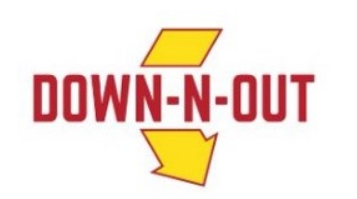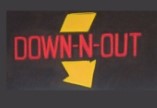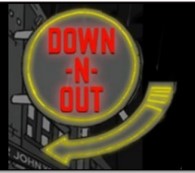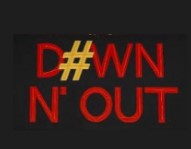Down N’ Out – Down on their luck
In-N-Out Burgers, Inc v Hashtag Burgers Pty Ltd [2020] FCA 193
Sydney burger chain Down N’ Out is looking to appeal Federal Court Justice Anna Katzmann’s ruling in a case brought by American fast food giant In-N-Out Burgers, Inc. (In-N-Out). In her decision handed down earlier this year, Justice Katzmann found that Down N’ Out infringed In-N-Out’s registered trade marks and engaged in misleading and deceptive conduct and passing off. At a hearing last week, her Honour made declarations regarding Down N’ Out’s infringing conduct and granted Down N’ Out leave to appeal the orders. The determination of compensation will take place after any appeal.
Background
In-N-Out is a fast food business established in California in 1948. It operates hundreds of restaurants in high profile tourist hot spots in the United States. It has a long history of use of the phrase IN-N-OUT and associated logos in the United States and owns several Australian trade marks for IN-N-OUT BURGER and its logo as depicted below (although not registered in colour).
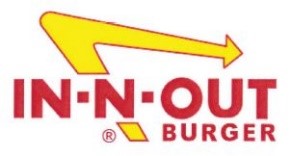
In-N-Out’s menu offering includes basic items and a “secret” menu, as well as variations to basic items such as “ANIMAL STYLE” and “PROTEIN STYLE”. While In-N-Out do not have any permanent Australian locations, it has hosted very successful annual pop-up events in Australia since 2012.
Down N’ Out was founded by Benjamin Kagan and Andrew Saliba in 2016, before being run by Hashtag Burgers Pty Ltd. The business idea was formed in 2015 when, following In-N-Out’s 2015 pop-up event, Mr Kagan and Mr Saliba held a “Funk-N-Burgers” pop-up burger event at a Sydney bar. Mr Saliba asked a graphic designer to make a sign “…like [the] in n out burger” sign, which resulted in the below logo being created and used at the event:
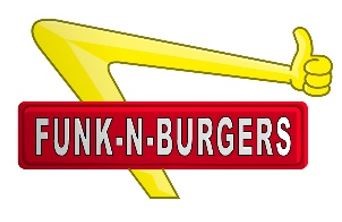
The event was also promoted with the following Facebook announcement:
“This time on the menu we have the legendary In’N’Ou … I mean the Down’N’Out burger served up ANIMAL STYLE for all you fatties….”
In 2016, Mr Kagan and Mr Saliba decided to open a burger restaurant with the name DOWN-N-OUT. The burger chain was marketed as an “In-N-Out tribute” offering “In-N-Out inspired burgers” including “a plethora of secret menu hacks such as Animal Style and Protein Style”.
In-N-Out sent a letter to Down N’ Out requesting (amongst other things) that Down N’ Out adopt an alternative name to avoid confusion with In-N-Out. But the owners refused to drop the name altogether and argued that Australian consumers would not be confused as they would understand DOWN-N-OUT to mean someone who was ‘down on their luck’. The self-proclaimed “cheekily” named burger restaurant was intended to be an Aussie spin on In-N-Out, which the owners argued could be differentiated by their use of the word “DOWN” to connect with its “Down Under” consumer base and location. The decision was however made to vary the name from DOWN-N-OUT to D#WN N’ OUT. A selection of the various logos they used over time are depicted below:

Trade Mark Infringement
Justice Katzmann found that the resemblance between the competing marks was so close as to be likely to cause confusion or deception. In finding the marks were deceptively similar, Justice Katzmann considered:
- there were significant visual and aural similarities, with both ending in “N” followed by “OUT” and appearing in the same font. It made no difference, in her Honour’s opinion, that Down N’ Out’s new marks did not include hyphens, had an apostrophe after the letter N and a hashtag in place of the letter O, as these changes did not materially alter their appearance or pronunciation;
- although the meanings of “down and out” and “in and out” can differ, the meanings can change according to the context. Both marks were used in connection with the sale of fast food, particularly burgers. The directional term “down” could suggest that customers will be served quickly by going down or into a restaurant, the very notion suggested by “in and out”. In the context, consumers could also wonder whether there is an association between the businesses, including whether Down N’ Out was a “down under” or “no frills” version of In-N-Out; and
- the overwhelming inference from the evidence was that Mr Kagan and Mr Saliba only chose the name DOWN-N-OUT because of its resemblance to IN-N-OUT and adopted aspects of In-N-Out’s branding and menu to remind consumers of In-N-Out and thereby capitalize on its reputation and trade, rather than reinforce the notion of something being “disreputable or pitiable”. Nor did they take any action to dispel the possibility of confusion (including on social media) or give evidence at trial to prove this was not their intention.
Misleading and Deceptive Conduct and Passing Off
In order to make out its passing off and misleading and deceptive conduct claims, it was necessary for In-N-Out to prove that it had a significant reputation in Australia.
In spite of In-N-Out’s minimal physical presence in Australian, it was able to establish that by 2016 it had a significant reputation in Australia as a result of its online presence, the significant local media interest in its business and the frequency of Australian travelers visiting its American restaurants. This was reinforced by Down N’ Out’s own press releases, which called In-N-Out “legendary” and Down N’ Out “Sydney’s Answer to In-N-Out Burgers”. Justice Katzmann pointed out that there would be no point in making these references if In-N-Out had no reputation in Sydney.
Moreover, Justice Katzmann found that Down N’ Out used In-N-Out’s reputation to launch its business, stating “it was the bait used in their advertising campaign to attract customers to their business”. In light of the connection between Australia and “Down Under”, In-N-Out’s history of pop-up events and reputation in Australia, the totality of Down-N-Out’s conduct (including deliberately appropriating aspects of In-N-Out’s marks and mimicking In-N-Out’s menu) and use of similar marks in relation to burgers and burger restaurants was likely to mislead or deceive consumers into thinking that Down-N-Out was operating as an Australian branch or franchise of In-N-Out or was somehow associated with In-N-Out. Here Justice Katzmann considered the “hangover” effect” – that Down N’ Out drew an initial association with In-N-Out (particularly by using the same colour scheme and an arrow in the first iterations of its logo) and then engaged in future conduct to reinforce this association rather than break it.
The same analysis of In-N-Out’s reputation and Down N’ Out’s conduct led Justice Katzmann to conclude that Down N’ Out had passed off its goods and services as those of In-N-Out or that it had some false association or connection with In-N-Out. Although there was no evidence that In-N-Out suffered any damage, Justice Katzmann found that In-N-Out had suffered loss of a reasonable royalty or licence fee as a result of Down N’ Out’s use of In-N-Out’s trade marks.
Liability of directors
Justice Katzmann found that Mr Kagan and Mr Saliba were liable for misleading and deceptive conduct prior to the incorporation of their company and for being knowingly involved in the company’s misleading and deceptive conduct. However, liability in respect of trade mark infringement and passing off was not established since In-N-Out failed to prove that the company had been incorporated for the purpose of infringement, that Mr Kagan and Mr Saliba knew their conduct was likely to infringe (in fact they obtained legal advice to the contrary) or that the company was used merely as a corporate shield to protect the directors from liability.
Key takeaways
Business owners should avoid appropriating another trader’s branding to launch and promote their own brand, including by putting an Australian twist on the name of a foreign business which has a following in Australia. Seek legal advice if you intend to draw ‘inspiration’ from competitors in your market before launching a new business, product or marketing campaign.

